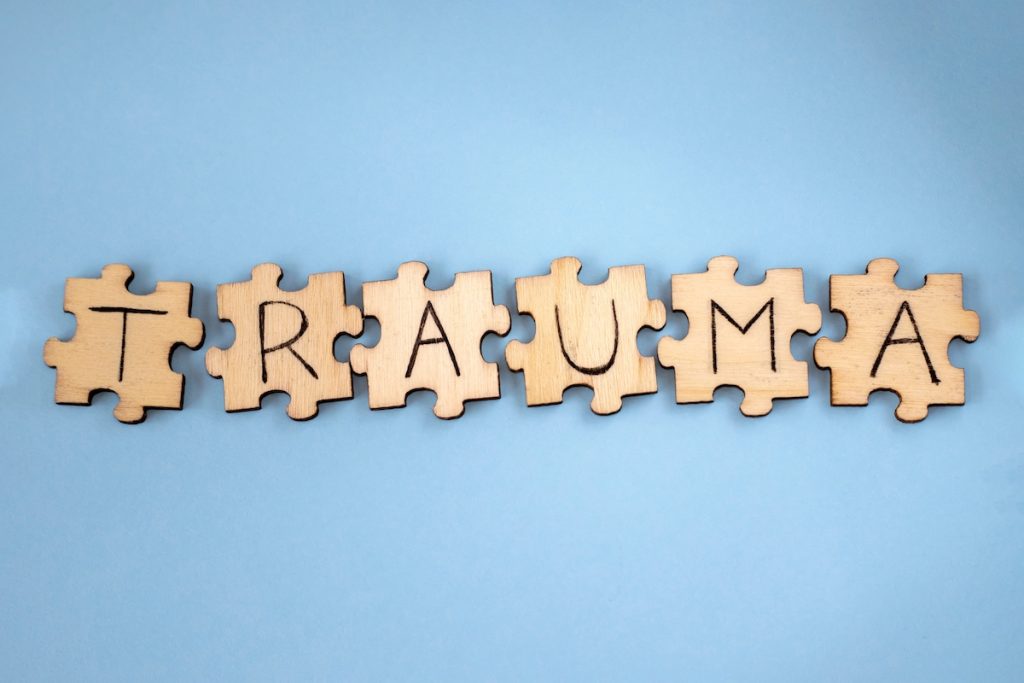
Around 70% of children (aged under 18) in the youth justice system are likely to have a mental health issue (HM Inspectorate of Probation, 2023; Parliament UK, 2020). Predictably so, as the vulnerability in this population is heightened due to adversities such as childhood abuse and family dysfunction (Martin et al., 2022). Research suggests that childhood adversities are more common among young offenders compared to the general population (Pyle et al., 2016). Consequently, children in the criminal justice system, known also as the ‘Secure Estate’, may exhibit multiple, complex needs including learning, emotional, and neurodevelopmental needs (Atkinson et al., 2023).
Accounting for such needs in the secure estate is crucial for preventing re-traumatisation that often occurs due to neglect. This typically happens in settings with low emotional support and, instead, high emphasis on regimen (Bryson et al., 2017; MacDonald et al., 2013). Moreover, it is an ethical requirement to ensure children are looked after by staff who are trained in trauma-informed approaches and understand the complexity of a child’s lived experience (Jacob et al., 2023). Adequate professional training and the aforementioned clinical skills help in creating a safe environment for children to share their stories and build trusting relationships. Good therapeutic rapport leads to positive outcomes such as prosocial attitudes, and higher self-esteem (Lewing et al., 2018).
An example framework for trauma-informed care is SECURE STAIRS. A distinguishing feature of this framework is formulation meetings, which involve both the staff and the child to build a comprehensive understanding of their “multiple complex needs”. The literature highlights that staff who are trained under the framework report better understanding and confidence in providing suitable care (Atkinson et al., 2023). In England, SECURE STAIRS has been adopted within the Children and Young People’s Secure Estate (CYPSE; it comprises institutions for custody and/or welfare placement) and has been commissioned by NHS England and NHS Improvement across the sites (D’Souza et al., 2021). However, the children’s perspective and experience of such therapeutic relationships within CYPSE are under-researched. Jacob et al. (2023) aimed to voice the experiences of these children through an explorative qualitative study.
Note: The authors of this paper (Jacob et al., 2023) refer to participants as ‘children’, not as adolescents or teenagers. The same term will be used throughout this blog.

Trauma-informed therapeutic relationships in criminal justice settings are crucial for supporting children in and aftercare.
Methods
Twenty-eight children aged 16-18 were selected by staff members from five different CYPSE sites in England and expressed participation interest after being informed of the study’s nature. It’s important to note that CYPSE sites were at different stages of implementing SECURE STAIRS. Children under 16 years old were not included due to the limitations of obtaining parental consent. Researchers obtained ethical approval, and participants’ informed consent and anonymised the data. They also explained the nature of formulation meetings to ensure children shared relevant experiences.
Jacob and colleagues used topic guide questions to explore children’s experiences with the following qualitative methodology:
- (mostly) in-person, semi-structured interviews and a focus group;
- audio-recorded, except 6 interviews used field notes due to site restrictions;
- duration: 17 minutes on average, range 5-41 minutes;
- “smart verbatim” transcription (captured any utterances without alternations).
Two coders analysed the transcripts using inductive thematic analysis. During a preliminary deductive stage, transcripts were reduced to a manageable dataset through coding and the creation of an analytical framework (i.e., categorising sets of codes; Gale et al., 2013). Then, employing an inductive method, researchers focused on categories relevant to the research question (‘Culture change – relationship with staff’ and ‘Formulations’) and used the Constant Comparative Method (Boeije, 2002) to derive the themes. Any discrepancies in interpretation were discussed.
Results
The researchers generated 13 themes of children’s experience of relationships with staff and formulation meetings:
- Helping behaviour – staff’s helpfulness.
- Inconsistencies/instability within settings – for example, high staff turnover and different personal characteristics, with cases where “you will have other staff you just don’t want to be around”.
- Building facilitative relationships – this was primarily a positive experience, but usually with a single staff member.
- Sense that staff cannot help – further explained by children as lack of abilities/means/duties.
- Communication as a conduit to positive relationships – children contrasted two-sided communication with direct, order-like communication, where the first one created more of a safe space to reach out to staff.
- Capacity to understand children and/or to express empathy.
- Caring – children recognised the boundaries of the staff’s role, e.g., “Cause they’re not your mate, they look after you”.
- Relationships worked on a quid pro quo basis.
- Being central to the formulation conversations – most children shared positive experiences but not all participants were part of formulation meetings or even knew about them.
- ‘Good’ staff – there appears to be an implicit division of staff on ‘good’ and, as the authors inferred, ‘not good’; unfortunately, the descriptions of ‘good stuff’ are insufficient to draw a clear distinction.
- Trust – children felt that they must earn respect from staff, and that, overall, there is no trust in their relationships. Trust and respect were deemed necessary for positive rapport.
- Treat [children] like criminals – there was a sense of being seen just as a criminal, a prisoner. However, some children expressed a positive shift in attitudes after formulation meetings, where they could share their stories.
- Sense of fair treatment – children described a lack of sense of fair treatment, sometimes due to being seen as ‘criminals’.
Altogether, the themes pertain to children’s perceptions of staff, settings, and the SECURE STAIRS framework. Additionally, the themes tap into children’s self-concept and the positiveness of therapeutic relationships. Crucially, there is a mix of positive and negative experiences, which reflects variability in children’s experiences of the secure estate in different aspects (i.e., themes).

An overarching idea in children’s responses was the importance of facilitative relationships, where children are equal and not seen as criminals.
Conclusions
This study captured how the relationship between staff and children in CYPSE settings in the UK can serve both as vital support or, unfortunately, fail to succour. Children highlighted factors that can strengthen their relationships with the staff — signifying areas for improvement in the current services and staff training.

Positive relationships between children in the criminal justice system and staff are based on trust, respect, and fair treatment.
Strengths and limitations
It is invaluable that current research and practice are moving on from the heavily adult-sided power dynamic to a more inclusive decision-making process, where children’s voices are raised (Case et al., 2021). This study contributes to the stigma-breaking body of research by giving children in CYPSE England a chance to express their experience of SECURE STAIRS. The use of interviews allowed children to express both positive and negative views of the staff, settings, and the framework. The study addresses its aims to fill a research gap in the exploration of implementing a trauma-informed framework in a criminal justice setting in the UK: the sample is relevant, and the topic guide questions were versatile to generate themes that tap into several aspects of children’s experience. Thus, the results provide a broad overview of a child’s life in one of the CYPSE sites.
The study has several limitations, and the researchers provide a good overview of potential biases and sample limitations (p. 7). These can offer considerations for further research in this area. However, there are other limitations that require attention:
- The authors do not report the socio-demographic characteristics of the participants and do not provide a rationale for this. Although they report that they could not find associations between the socio-demographic factors and the findings due to re-identification after anonymisation, it would still be important to know more about the sample to draw conclusions on representativeness.
- The research question seems to not be fully addressed by the authors, or at least not explicitly (“What are the key elements of the development and maintenance of effective therapeutic relationships in the CYPSE?”). The results (13 themes) do explore child-staff therapeutic relationships, but we need to be cautious in suggesting that each theme presents a “key element”. Admittedly, some themes fit the question; for example, “trust” could be a “key element […]”. However, would it be “key” for the development or maintenance of the relationship or both? Are all thirteen themes “key” (i.e., of crucial importance), and if so, how are they selected or prioritised?
- The rationale for conducting a focus group is not considered by the authors adequately in the methodology section. As a reader, I would like to know more about why it was chosen in addition to semi-structured interviews. Did children’s responses differ in any way? I would be curious to see if, for instance, this research technique bears any (dis)advantages. For example, would the presence of peers increase the candour of children’s responses compared to one-to-one interviews with “professionals from within ‘the system’”?
- The sites were at different stages of implementing the SECURE STAIRS framework. If this variance was intentional, it would be interesting to see any differences in emerging themes depending on the stage of the framework across the multiple sites.

Children’s experiences of the Children and Young People’s Secure Estate (CYPSE) are a valuable addition to the literature, but should be treated with caution.
Implications for practice and research
Clinical leads and multidisciplinary teams in forensic settings in the UK need to assess whether they are implementing a trauma-informed approach with their population. It’s important to note that some children in the study were not aware of SECURE STAIRS as a framework. This may be a call for practitioners to monitor the implementation of the framework and ensure good quality care is provided. Additionally, this study offers insights into a trauma-informed approach and indirect interventions, such as team formulation, can support children and improve their quality of care.
Future research can aim to improve the design and account for subject-specific limitations (e.g., restrictions on audio-recording); and formulate narrower research questions to target themes from the present study that could be explored in-depth. Lastly, research is primarily focusing on talking therapies and direct interventions, whilst evidence on indirect interventions and trauma-informed practices is scarce – this opens new paths for research ideas and questions in criminal justice settings.

The present study opens a new arena for research, which holds promise for important insights into the criminal justice system through the eyes of a child.
Statement of interests
None.
Links
Primary paper
Jacob, J, D’Souza, S., Lane, R., Cracknell, L., Singleton, R., & Edbrooke-Childs, J. (2023). “I’m not Just Some Criminal, I’m Actually a Person to Them Now”: The Importance of Child-Staff Therapeutic Relationships in the Children and Young People Secure Estate. International Journal of Forensic Mental Health.
Other references
Atkinson, S., McKewon, A., Caveney, D., West, E., Kennedy, P. J., & Macinnes, S. (2023). The SECURE STAIRS Framework: Preliminary Evaluation of Trauma Informed Training Developments Within the Children and Young People’s Secure Estate. Community Mental Health Journal.
Boeije, H. (2002). A purposeful approach to the constant comparative method in the analysis of qualitative interviews. Quality and Quantity.
Bryson, S. A., Gauvin, E., Jamieson, A., Rathgeber, M., Faulkner-Gibson, L., Bell, S., Davidson, J., Russel, J., & Burke, S. (2017). What are effective strategies for implementing trauma-informed care in youth inpatient psychiatric and residential treatment settings? A realist systematic review. International Journal of Mental Health Systems.
Case, S., Lorenzo-Dus, N., & Morton, R. (2021). YOT Talk: Examining the communicative influences on children’s engagement with youth justice assessment processes. European Journal of Criminology.
Gale, N. K., Heath, G., Cameron, E., Rashid, S., & Redwood, S. (2013). Using the framework method for the analysis of qualitative data in multi-disciplinary health research. BMC Medical Research Methodology.
Lewing, B., Doubell, L., Beevers, T., & Acquah, D. (2018). Building trusted relationships for vulnerable children and young people with public services. Early Intervention Foundation.
MacDonald, M., Rabiee, F., & Weilandt, C. (2013). Health promotion and young prisoners: a European perspective. International Journal of Prisoner Health.
Martin, A., Nixon, C., Watt, K. L., Taylor, A., & Kennedy, P. J. (2022). Exploring the Prevalence of Adverse Childhood Experiences in Secure Children’s Home Admissions. Child & Youth Care Forum.
Mental health. HM Inspectorate of Probation website, last accessed 29 Sep 2023.
Pyle, N., Flower, A., Fall, A. M., & Williams, J. (2016). Individual-Level Risk Factors of Incarcerated Youth. Remedial and Special Education.
The Youth Justice Population. Parliament UK website, last accessed 29 Sep 2023.
Photo credits
- Photo by Matheus Ferrero on Unsplash
- Photo by AbsolutVision on Unsplash
- Photo by Ronda Dorsey on Unsplash
- Photo by Roman Bilik on Unsplash
- Photo by Krzysztof Hepner on Unsplash
